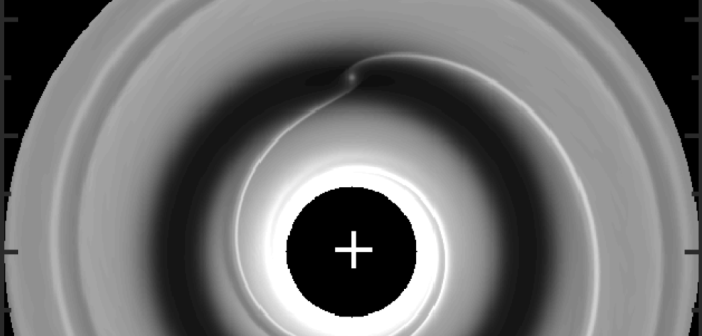![The authors' model of what the above disk could look like as we observe it, in a scattered-light image. The morphology of the gap can be used to estimate the mass of the planet that caused it. [Dong & Fung 2017]](https://aasnova.org/wp-content/uploads/2017/03/fig2-3-260x260.jpg)
The authors’ model of how the above disk would look as we observe it in a scattered-light image. The morphology of the gap can be used to estimate the mass of the planet that caused it. [Dong & Fung 2017]
The above image from a computer simulation reveals the dust structure of a protoplanetary disk (with the star obscured in the center) as a newly formed planet orbits within it. A recent study by Ruobing Dong (Steward Observatory, University of Arizona) and Jeffrey Fung (University of California, Berkeley) examines how we can determine mass of such a planet based on our observations of the gap that the planet opens in the disk as it orbits. The authors’ models help us to better understand how our observations of gaps might change if the disk is inclined relative to our line of sight, and how we can still constrain the mass of the gap-opening planet and the viscosity of the disk from the scattered-light images we have recently begun to obtain of distant protoplanetary disks. For more information, check out the paper below!
Citation
Ruobing Dong (董若冰) and Jeffrey Fung (馮澤之) 2017 ApJ 835 146. doi:10.3847/1538-4357/835/2/146
![The authors' model of what the above disk could look like as we observe it, in a scattered-light image. The morphology of the gap can be used to estimate the mass of the planet that caused it. [Dong & Fung 2017]](https://aasnova.org/wp-content/uploads/2017/03/fig2-3-260x260.jpg)

2 Comments
Pingback: planetary gap simulation
Pingback: Simulating Planetary GapsThe above image from a computer simul ... | Zero to Infinity